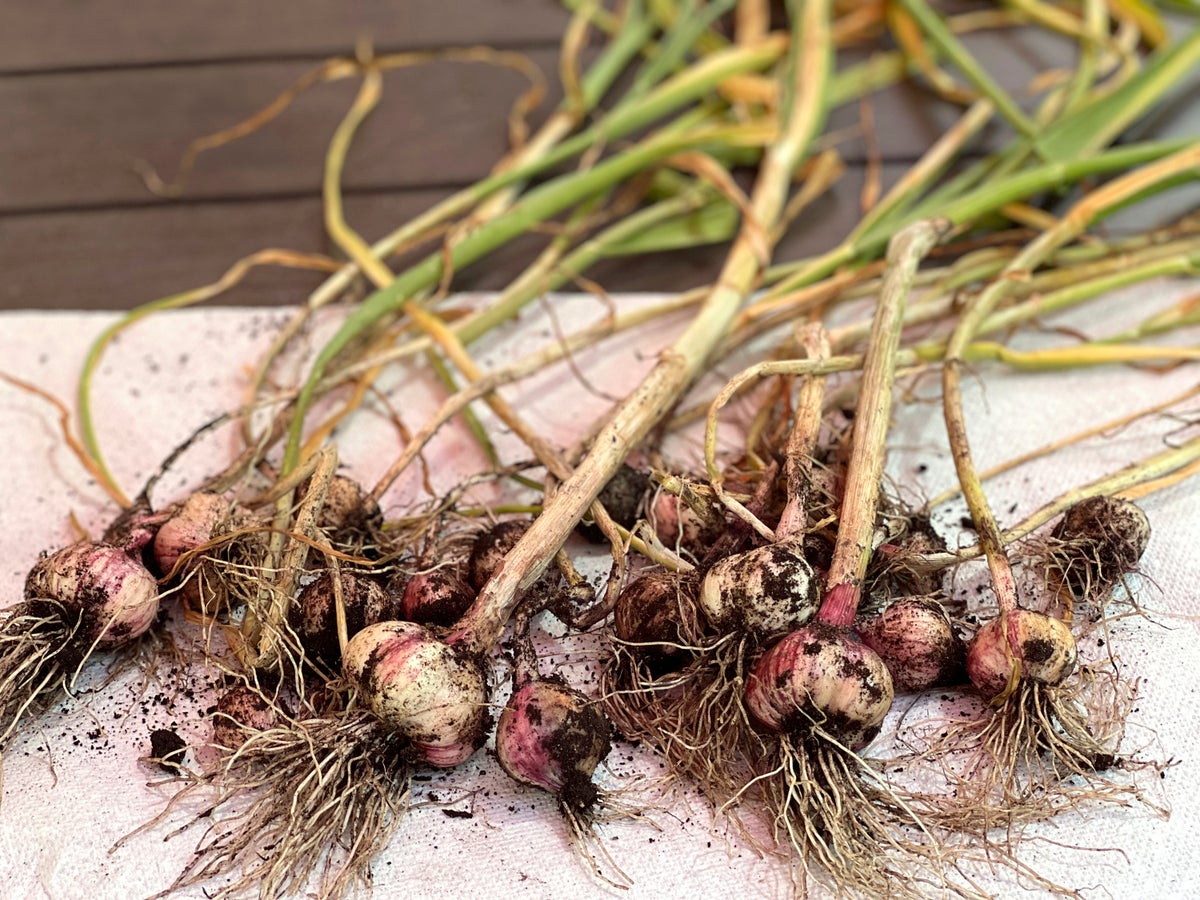
I was surprised to learn recently that, according to Google Trends data gathered by AllAboutGardening.com, the most popular fall-planted crop in the United States is.... garlic.
My guess would have been kale. Possibly beets. Maybe Brussels sprouts. But garlic?
Inspired, I conducted my own deep dive into Google’s search trends, comparing Americans’ interest in growing garlic with interest in growing other fall-planted bulbs, like tulips, daffodils, hyacinths and crocus. Surely, colorful blooms would trump the spicy, pungent vegetable.
No. When people used the search term “how to grow...,” garlic was again the frontrunner when compared with those spring bulb plants. I was so gobsmacked that for the first time in my life, I used the word “gobsmacked.”
Could it be that Americans have a previously undisclosed obsession with garlic? Or are we collectively perplexed about how to grow it? I love garlic as much as the next girl, but I suspect it’s the latter, which would explain all the “how to” queries.
Growing garlic, however, is every bit as easy as growing daffodils. There are just a few things to know before you plant it:
There are two types of garlic — hardnecks and softnecks. Plant the type best suited for your climate.
Hardneck varieties are recommended for northern regions, where they should be planted 6-8 weeks before a hard frost. Their heads are comprised of a single row of large cloves formed around an underground stem. They are more flavorful than softnecks but don’t store as long.
Softneck varieties are better suited for growing in warmer climates, and their heads contain several stacked rows of smaller cloves. Due to their longer shelf life, softnecks are typically sold in supermarkets.
Garlic plants are heavy feeders, so incorporate a generous amount of compost into the top 3-4 inches of soil to increase its fertility. Include a helping of mycorrhizae fungus to boost bulb formation.
Plant only seed garlic purchased from a reputable supplier – or cloves from the largest, healthiest heads saved from last year’s harvest.
Supermarket garlic should not be planted because it is often treated with growth inhibitors to prevent sprouting at the store and in your refrigerator. It also may not be the type best suited for your growing conditions.
Separate the head into individual cloves without removing their papery skins. Plant the cloves, pointy end up, about 2 inches deep and 6 inches apart in rows spaced 12 inches apart.
Cover with soil, tamp it down and water well.
In regions where winter temperatures drop below 40 degrees, mulch the bed heavily with seed-free straw. Avoid using hay, which contains grass or grain seeds and is likely to turn your bed into a weedy mess. Water the straw to settle it into place.
It’s normal for plants to sprout during autumn and early winter, even in northern climates; leave them be.
Remove the mulch in spring, after the danger of frost has passed, and sprinkle a line of pelleted fertilizer or blood meal alongside each row, a few inches from stems. Keep the bed free of weeds, which may outcompete your crop for soil nutrients.
Hardneck varieties will send up tall, leafless stems called scapes in late spring. Remove them to allow the plant to focus its energy on underground bulb formation. The mildly garlic-flavored scapes are a seasonal delicacy that can be added to salads, cooked in soups or sautéed with other vegetables.
Softneck garlic varieties do not produce scapes.
Your garlic will be ready to harvest in mid-to-late summer when at least 50% of the plant has turned yellow. Rather than pull the bulbs, which would risk damaging them, carefully dig them out and brush off the soil, but don’t rinse them.
Set hardneck varieties with their stems attached on a drying rack or screen, then place in a well-ventilated, cool, dry spot for two weeks. Stems of softneck varieties can be braided and hung to dry. The cured garlic’s papery skin will help extend its shelf life.
Store bulbs in a cool, dry spot. Hardnecks will remain fresh for at least 3-6 months; softnecks will last up to 9 months.
—-
Jessica Damiano writes regular gardening columns for The Associated Press. Her Gardening Calendar was named a winner in the 2021 Garden Communicators International Media Awards. Her Weekly Dirt Newsletter won two Society of Professional Journalists PCLI 2021 Media Awards. Sign up here for weekly gardening tips and advice.
For more AP gardening stories, go to https://apnews.com/hub/gardening.







